What is a Chatbot? The Complete Guide to AI Chatbots in 2025

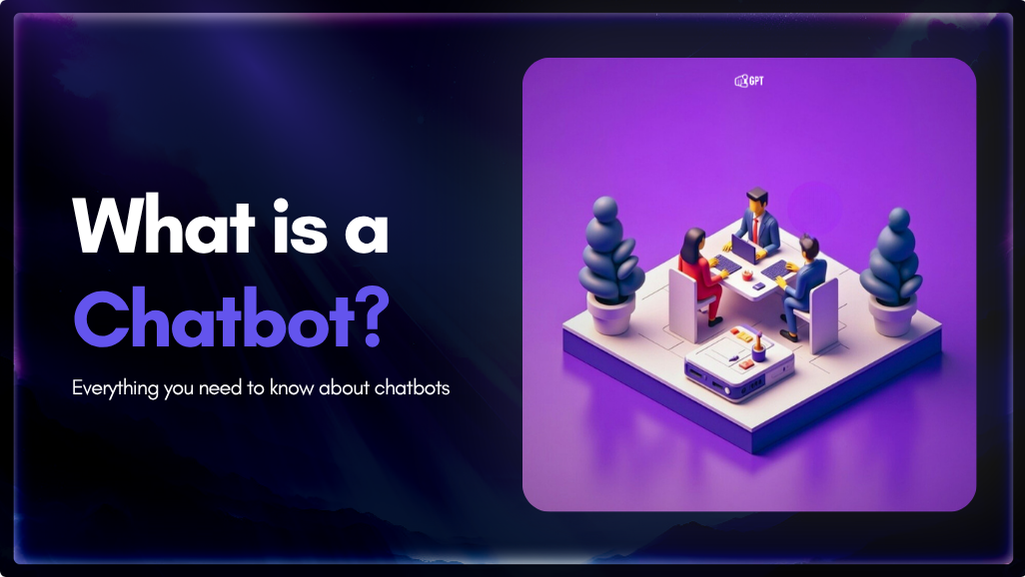
Chatbots now manage everyday customer interactions across retail, banking, healthcare, and logistics. They perform real actions using live business data instead of fixed replies. Modern AI chatbots understand intent, access systems, and deliver accurate responses instantly. Businesses use them to cut repetitive work and improve customer experience at scale. YourGPT brings these capabilities together in one no-code platform for support, sales, and operations.
You have probably interacted with a chatbot recently while checking a delivery update, booking a flight, or even getting a notification on WhatsApp about your recent order. Chatbots have become a natural part of how people interact with businesses across e-commerce, banking, telecommunications, and travel. They help users track orders, schedule appointments, solve problems, and find products without waiting for human assistance or navigating long menus.
Businesses use chatbots to deliver faster, more reliable, and always-available support. They help manage growing customer expectations for instant responses while reducing repetitive workload for human agents.
In 2025, more than 67 percent of consumers interact with chatbots every month, making them a key channel in modern customer service.
This blog covers everything you need to understand about chatbots: how they work, what makes them effective, and Implementation for your business. You will learn how leading organizations use chatbots to improve efficiency, strengthen customer relationships, and support business goals.

A chatbot is a software built to automate communication and handle user interactions without continuous human involvement. It may be deterministic (rule-based) or probabilistic (Conversational AI driven ). Deployment channels include web widgets, messaging apps, voice assistants, and custom integrations.
A chatbot’s core function is to automate three recurring operations: parse input, decide the next action, and generate responses.
When a customer types “my order not arrived,” the chatbot identifies three elements: possession (my), subject (order), and problem (not arrived). It then queries order systems using the customer’s account data and returns tracking information or escalation options.
This differs from traditional interfaces that require users to go through “Support > Orders > Track Package,” now users can describe their need conversationally. The chatbot handles the navigation.
Modern chatbots aren’t standalone programs. They’re middleware connecting communication channels to business systems. For example when Sephora’s chatbot recommends products, it’s accessing inventory databases, customer purchase history, and promotional calendars simultaneously.
A typical stack includes:
Chatbots handle volume human teams cannot match. Shockbyte chatbot processes 15,000 conversations weekly with 40% completing without human intervention. Average response time: 3 seconds versus 9 minutes for human agents.
Cost reduction follows predictably. Each chatbot conversation costs approximately $0.50 compared to $2-10 for human-handled inquiries. For businesses managing thousands of daily interactions, the economics are straightforward.
Chatbots today can reason, solve problems, and understand emotions with significant progress in contextual awareness. Yet, they still lag behind humans in general intelligence, especially in applying knowledge across unrelated situations or making intuitive judgments that rely on lived experience rather than data. Humans naturally connect ideas from different contexts and adapt to completely new problems, something current chatbots still find challenging to replicate fully.
AI RAG chatbots query external knowledge sources during each conversation. When you ask about your company’s vacation policy, the chatbot searches your HR documentation in real-time rather than relying on training data from months ago.
The process works like this: Your question converts into numerical representations (embeddings). These embeddings search through similarly converted documents in a vector database. The most relevant sections return to the language model, which crafts a response using this fresh information.
A customer service RAG chatbot at an electronics retailer accesses product specifications that update daily, current inventory levels, active promotions and pricing, warranty terms by product category, and recent customer reviews and Q&As.
This eliminates the “I don’t have information about that product” response. If the information exists in connected databases, the chatbot can access it. Response accuracy depends on document quality – garbage in, garbage out. Well-structured documentation yields 90%+ accuracy. Poor documentation drops accuracy to 60-70%.
Agentic chatbots execute tasks rather than just providing information. Tell an agent “find me the cheapest flight to Boston next month,” and it searches multiple sources, compares prices, checks your calendar for conflicts, and can complete the booking.
These systems break down requests into steps: understand the goal, plan the approach, execute actions, verify results, and adjust if needed.
A travel agent chatbot might search flight aggregators, check your previous seat preferences, verify passport expiration, compare with train alternatives, apply available discount codes, and hold reservations while awaiting confirmation.
The difference from traditional chatbots: agency. They make decisions within defined parameters. If flights are expensive, they might suggest alternative dates or nearby airports without being explicitly asked.
They excel at tasks with structured data and APIs but struggle with subjective or open-ended requests.
These chatbots connect to business systems and execute multi-step processes. They do not just answer questions about policy applications. They submit them, route for approval, update records, and notify relevant departments.
A typical insurance workflow chatbot integrates with CRM systems for customer data, document management systems for policy forms, underwriting software for risk assessment, payment gateways for premium processing, and notification systems for status updates.
When a customer messages “I want to apply for health insurance,” the chatbot collects required details, verifies eligibility, generates a quote, submits the application for approval, and provides real-time updates on progress. What previously required phone calls, forms, and manual verification now happens through natural conversation.
Voice chatbots process spoken language, adding complexity beyond text systems. They handle accent variations, background noise, interruptions, and the lack of visual cues that text conversations provide.
The technical pipeline includes speech-to-text conversion (100-300ms), intent processing (200-400ms), response generation (300-500ms), and text-to-speech synthesis (200-300ms). Total latency must stay under 1.5 seconds to feel natural. Anything longer creates awkward pauses that frustrate users.
Voice interfaces work best for hands-free scenarios such as driving or cooking, accessibility needs, quick queries and with hardware controls.
They struggle with complex information like reading long lists, precise data entry such as email addresses or account numbers, noisy environments, and multiple speakers.Domino’s voice ordering system handles “large pepperoni pizza for pickup” effectively but struggles with “the usual but make half of it vegetarian and can you add those breadsticks we got last time.” Success rates: 90% for simple orders, 45% for complex modifications.
Avatar chatbots add visual representation – animated characters or photorealistic humans that speak and gesture during conversation. The visual element aims to increase engagement and trust through non-verbal communication.
Technical requirements multiply, including lip-sync with speech output, gesture generation matching conversation context, facial expression mapping to sentiment, and render quality versus bandwidth trade-offs.
A banking avatar that explains loan terms uses facial expressions to emphasize important points and maintains eye contact to build trust. User studies show 23% higher information retention compared to text-only interfaces, but also 40% higher cognitive load from processing multiple channels.
Avatar implementation costs start at $10,000 for animated characters, reaching $100,000+ for photorealistic humans with full gesture libraries.
Current deployments concentrate in healthcare for therapy and consultation, education for language learning, hospitality for virtual concierges, and retail for virtual shopping assistants.
Rule-based chatbots operate on predefined logic instead of language models. They follow fixed “if–then” conditions and keyword matches to decide responses. When a user types “check my balance,” the chatbot identifies the keyword balance and displays a preset message.
They use decision trees or button-based flows where every input leads to a specific outcome. These chatbots do not learn from data or improve automatically.
A banking chatbot might ask “Do you want to check account balance or recent transactions?” and continue the conversation through structured options. If the user writes something outside its rules, it cannot respond correctly.
They perform best for repetitive, predictable tasks. They struggle with complex or unstructured inputs that require reasoning or memory.
Businesses still use rule-based chatbots for control, compliance, and reliability. They form the base layer of many customer service systems before handing over to AI or live agents.
The best chatbot type depends on your goal:
Modern platforms such as YourGPT combine these capabilities in one no-code platform. You can build, train, and deploy any type of AI chatbot using your own data sources, workflows, and communication channels — without technical complexity.
The difference between traditional chatbots and modern AI-powered chatbots lies in how they understand, process, and act on information.
Traditional chatbots follow fixed rules and pre-defined flows. They respond based on matching keywords or selected options, and struggle when a user phrases a question differently than expected.
While AI chatbots analyze the meaning behind words, consider context from earlier parts of the conversation, and generate responses dynamically — even when input is incomplete or ambiguous.
Below is a clear comparison of how both systems operate in 2025.
| Aspect | Traditional / Rule-Based Platforms | AI-Powered Platforms | Real Difference |
|---|---|---|---|
| Setup Time | 3–4 weeks of flow building | 1–2 days with knowledge upload | Upload an FAQ document instead of mapping hundreds of conversation paths |
| Training Method | Manual decision trees and flows | Upload documents, websites, or past chats | Manual logic replaced by instant learning from existing knowledge |
| What You Build | If-this-then-that workflows | Knowledge-based conversations | AI understands intent across phrasing, not just predefined menus |
| Maintenance Work | Edit or rebuild flows for every new scenario | Add or update documents in the knowledge base | Faster updates without reprogramming conversation logic |
| User Experience | Menu-driven conversations | Natural, open-ended dialogue | AI interprets free text instead of requiring option selections |
| Integration Depth | Basic webhooks or Zapier | Native API orchestration | AI can trigger actions across databases, CRMs, and payment systems |
| When Conversations Break | Shows error or restarts flow | Asks clarification and continues | AI recovers from typos or ambiguity instead of resetting |
| Multilingual Support | Separate bots for each language | Automatic translation within one bot | AI supports global users instantly with real-time translation |
| Analytics Provided | Click rates and completion metrics | Intent, sentiment, and topic analysis | AI insights explain why users behave a certain way |
| Response Quality | Fixed, pre-written replies | Dynamic, contextual responses | AI generates precise answers matching user intent |
| Conversation Limits | Unlimited within basic logic | Token or message-based plans | Traditional systems scale easily; AI scales intelligently |
| Customization Options | Visual flow builder | Prompt and knowledge-based tuning | AI allows tone, expertise, and context adjustments |
| Live Agent Handoff | Transfers without context | Shares full conversation history | Agents see prior interactions and AI’s reasoning |
| ROI Timeline | 1–2 months to reach baseline efficiency | 1–3 months for measurable impact | AI scales automation faster, sustaining up to 75% efficiency |
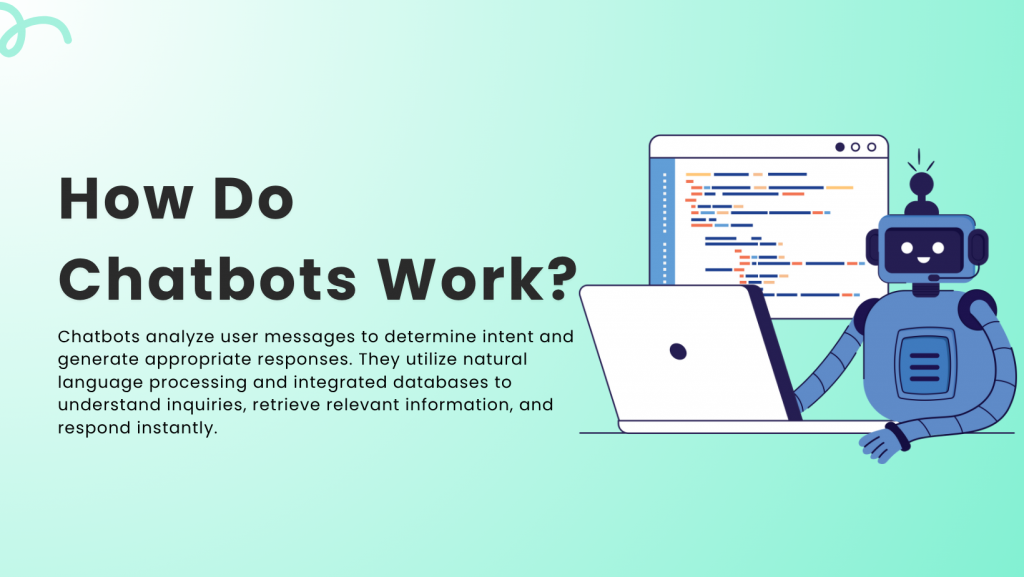
Chatbots work by processing a user’s message, identifying intent, and generating an appropriate reply. Modern chatbots use natural language processing and connected databases to interpret questions, retrieve data, and respond in real time.
Chatbots have moved beyond simple intent classification or keyword matching. Modern chatbots powered by large language models (LLMs) understand intent, entities, and context together.
They reason, plan, and execute actions across connected systems, making conversations more natural and capable than ever before.
When you send a message such as “I need to change my flight to Monday,” the chatbot begins processing immediately.
First, the system converts your message from text into tokens, small numerical units the model understands. For example, “Monday” might become [48367, 1466].
These tokens then turn into vectors — high-dimensional numerical representations that capture meaning and relationships between words. Instead of focusing only on exact phrases, the chatbot now understands that “change my flight”, “reschedule trip”, and “modify booking” all mean the same thing.
Before processing further, a validation layer runs automatic checks for security threats, personal data that should not be processed, message size limits, and policy compliance.
Once validated, the chatbot performs semantic search across connected sources such as past conversations, documentation, or account data. It retrieves only the most relevant information, ensuring contextually correct responses.
This is the brain of the system — the layer that coordinates reasoning, tool use, decision-making, and memory.
After validation and retrieval, the orchestration layer manages how the LLM interprets, plans, and acts. It connects user intent to business logic and data sources.
Traditional chatbots used predefined flows. Modern systems use reasoning.
The LLM receives the user message, the retrieved context, system instructions, and available tools. It decides what must happen next — reply directly, call an API, or gather additional data.
For example, a flight change request may trigger the following plan:
retrieve booking details, check Monday’s availability, calculate change fees, and present options.
This planning happens in a single forward pass through the model, not through static flowcharts.
Chatbots determine whether to respond directly or perform an action.
If responding directly, the model generates text, runs it through safety filters, and delivers it to the user.
If executing an action, it outputs a structured function call, validates parameters, triggers an API or database query, and merges the results into the response.
Modern systems use function-calling frameworks such as OpenAI’s tools or Anthropic’s functions interface. These allow models to safely trigger external operations like updating CRM data, fetching account balances, or generating reports without unrestricted system access.
The orchestration layer ensures every response meets multiple constraints:
it must directly answer the query, align with retrieved facts, follow tone guidelines, and respect conversation history.
If policy documentation allows changes up to 24 hours before departure but the API denies a change, the chatbot reconciles both sources:
“While standard tickets can be changed up to 24 hours before departure, your basic economy ticket has specific restrictions.”
After responding, the orchestration layer updates memory across multiple systems:
Each chatbot operates within a fixed context window, typically 128k–1 Million tokens in 2025. Messages beyond that limit move to vector databases or long-term stores, allowing recall without overloading the model.
If a process spans multiple steps, such as verifying identity, checking availability, and processing payment, the orchestration layer maintains state between each stage to ensure logical continuity.
Every interaction generates data such as success rate, latency, and satisfaction signals.
Monitoring dashboards track these metrics in real time to identify performance issues, prompt drift, or unexpected responses.
This observability layer ensures that chatbots remain consistent, accurate, and compliant across large-scale deployments.
Even the best chatbots face unpredictable scenarios — vague questions, network delays, or missing data. Modern architectures handle these gracefully through intelligent fallback mechanisms that maintain user trust and response quality.
Instead of failing or showing an error, the system evaluates its confidence level, verifies responses against reliable sources, and adapts its next step. If external data is temporarily unavailable, it may provide an approximate update or a clear status message.
If uncertainty remains high, the chatbot automatically routes the case to a human agent with full context so the user never starts over.
This design ensures continuity, transparency, and consistent reliability, even under unexpected conditions.
Modern chatbots have evolved beyond simple conversational interfaces. They now function as intelligent orchestration systems that connect user intent with real-world action.
By understanding intent, entities, and emotional tone, these systems reason across connected data, execute tasks, and maintain memory within a governed orchestration layer that ensures accuracy, compliance, and continuity.
In 2025, a chatbot does not just answer. It thinks, verifies, and acts intelligently on your behalf.
By 2025, chatbots have become an integral part of many industries. About 68 percent of consumers have interacted with automated customer service chatbots, and nearly 60 percent of organizations now use generative AI in their marketing operations.
According to the Chatbot Statistics 2025 study, these tools have advanced well beyond the experimental stage; companies are making chatbots a key element in engaging with customers.
The global chatbot market is valued at about 15.6 billion dollars in 2025 and is projected to reach nearly 47 billion dollars by 2029, reflecting an annual growth rate of around 24 percent.
The Top 10 AI Tools reveal that this growth is driven by real results like lower support costs and better scalability rather than speculation. More businesses are viewing chatbots as dependable digital staff capable of maintaining high performance even as they scale.
Chatbots have become part of daily interaction patterns. One in four people now uses them every day, and about 40 percent of millennials rely on them for quick responses or order-related queries. Nearly 61 percent of users prefer self-service for simple issues, and more than half turn to chatbots before contacting a live agent.
Chatbots now handle the majority of customer-facing conversations. They are expected to manage close to 95 percent of customer interactions across support, sales, and service. In e-commerce, most chatbot queries involve order tracking, refunds, or payment assistance.
Around 40 percent of conversations reach full resolution without human involvement, and average response time has dropped to just three seconds compared with nine minutes for human agents. The result is higher customer satisfaction scores as users receive instant, reliable answers without waiting in support queues.
The shift from rule-based logic to generative AI defines 2025’s chatbot landscape. About 58 percent of consumers report that AI-driven chat has improved their online shopping experience, and more than half are open to using AI tools for product recommendations.
It shows measurable benefits: higher accuracy in complex questions, faster adaptation to new topics, and smoother, more natural conversation flow that reflects human-like understanding.
Chatbots continue to demonstrate clear financial advantages. The average cost per chatbot interaction is roughly 50 cents, compared with 2 to 10 dollars for a human-handled query. Setup for a standard deployment takes two to four weeks, and most organizations achieve positive returns within three to six months. A single chatbot can manage workloads equal to five or six human agents.
Adoption levels differ across sectors, but all major industries report steady growth. Retail and e-commerce lead adoption with transactional chatbots that manage product searches, order tracking, and returns, achieving an average resolution rate of 78 percent.
In banking and finance, chatbots handle millions of routine interactions each month, such as balance checks and account inquiries, while maintaining strict compliance standards.
Healthcare providers use chatbots for appointment scheduling, reminders, and symptom triage, although regulation limits medical-advice functions. Within organizations, HR and IT teams deploy chatbots for internal queries, policy guidance, and ticket automation, reducing repetitive support loads and improving employee response times.
Even with widespread adoption, many operational challenges remain. Nearly half of all chatbots still struggle with handling complex multi-step conversations, and integrating them with legacy systems continues to pose difficulties. Their performance depends largely on data quality since organized and up-to-date documentation can achieve over 90 percent accuracy, while inconsistent or outdated data often reduces results to around 60 to 70 percent.
For most companies today, the question isn’t whether to use chatbots but how to make them work well with their existing systems. Businesses that still depend only on human agents often deal with slower replies, higher expenses, and limited availability. Chatbots aren’t meant to replace people. They’re there to handle common repetitive tasks so that we (humans) can focus on more important tasks.
Research from the Customer Experience Benchmark shows that companies combining chatbots with human support achieve faster resolutions, lower ticket volumes, and higher satisfaction ratings.
By 2025, chatbots have become part of core business infrastructure. They deliver measurable gains in efficiency and consistency while improving customer experience at every touchpoint. For an in-depth comparison of leading AI chatbots and practical insights on selecting the right solution for customer support, you can explore our comprehensive guide here.
The best way to build an AI chatbot in 2025 is through a no-code platform built around three core aspects: knowledge integration, persona setup, and omnichannel deployment..
With YourGPT, you can create the best customer service AI agents that understand your data, match your brand tone, and handle support across every channel — all without writing any code.
Here’s the expert’s 5-step process to set it up effectively.
Your first step is to go to YourGPT.ai , sign up on and click “Create Your First Agent” to open your workspace.
YourGPT’s dashboard provide a complete solution needed to build and manage AI , making setup straightforward for any team.
Most users begin with training, adding agent’s persona and later build customised workflows with AI studio for advance needs. This clear starting point ensures accurate configuration and smooth training.

You make an AI chatbot accurate by “training” it on a curated set of your own business knowledge.
This is the most critical step. Your goal is to give the chatbot the context it needs to provide helpful answers instead of just memorized text.
Platforms like YourGPT automatically read, process, and structure this content. Within minutes, you’ll have an assistant that recognizes your policies, products, and service tone.
If you want deeper control over training, check our guide on how to train an AI chatbot.
You match your brand’s voice by defining a “Persona” that dictates its tone and by customizing its “widget” visual to match your site’s design.
This is what shapes how the chatbot feels to users.
For examples, refer to our chatbot persona guide.

A modern AI chatbot should work across all customer platforms using one shared knowledge base. This is called an omnichannel strategy.
After setup, training and testing you’re ready to launch. You’ll have two main deployment options.
The key benefit is that each channel shares the same knowledge base, so users get consistent, accurate replies whether they chat from a mobile app or your site.
You can find platform-specific walkthroughs in the Omnichannel AI Chat Support Guide.

You measure a chatbot’s success by monitoring its analytics dashboard for user engagement, query patterns, and conversation completion rates.
Launch is not the final step. After launch, check your dashboard to see how the chatbot performs.
You will start seeing patterns within a week. Your AI will handle more support on its own, and you’ll notice which questions need improvement answers. Small weekly updates will keep your chatbot aligned with your goals.
If you need help interpreting the metrics, visit the AI Chatbot Analytics and Optimisation Guide.

Chatbots are deeply integrated into industry-specific workflows as specialised systems tailored to the unique needs of each sector. They are trained on relevant data sets and connected directly to essential business platforms. This enables industries to optimise their use according to distinct goals, languages, and customer expectations.
Such targeted implementation allows chatbots to deliver precise and efficient assistance across a wide range of applications, from healthcare and retail to finance and manufacturing, enhancing operational efficiency and customer engagement in line with each industry’s demands.
In retail, chatbots function as comprehensive shopping companions, assisting customers with product discovery, personalized recommendations, inventory verification, and post-purchase support such as order tracking and returns. Advanced systems incorporate visual search and dynamic catalogs, enabling users to upload images or describe products conversationally.
Seamlessly integrated with inventory, logistics, and payment platforms, these chatbots efficiently handle high volumes of inquiries while ensuring a consistent and engaging brand experience.
Financial institutions use chatbots as trusted assistants for daily banking. Customers rely on them to check balances, transfer funds, make payments, and review transactions. These assistants also help users manage budgets, track expenses, and receive timely alerts about account activity. Their integration with banking cores and customer relationship systems enables real-time answers and smooth handoffs when human verification is required.
Healthcare chatbots act as digital front desks for hospitals and clinics. They simplify scheduling, remind patients about follow-ups, process insurance details, and help users understand where to seek care. Many are connected to hospital databases and patient portals, reducing wait times and freeing staff from routine communication. Their focus is efficiency and clarity, guiding patients while ensuring staff attention remains on direct care.
Inside organisations, chatbots streamline employee interactions with HR and IT. They help staff check leave balances, access payslips, request policy information, or resolve technical issues. Integrated with HR systems, payroll, and service desks, they deliver consistent answers without delays. These assistants also guide new employees through onboarding, training, and internal procedures, creating a uniform experience across regions and departments.
Travel chatbots are now central to managing trips and customer service. They search and book flights or hotels, update itineraries, assist with cancellations, and process loyalty points. When disruptions occur, they handle rebooking automatically. Connected to reservation systems and global distribution networks, they provide travellers with accurate, up-to-date options across multiple time zones and languages.
In education, chatbots support both academic and administrative processes. Students use them for course registration, schedule planning, assignment tracking, and accessing study materials. Institutions deploy them to manage admissions, financial aid, and campus communications. With connections to learning platforms and student databases, they personalise assistance and reduce administrative overhead.
Real estate chatbots simplify buying, renting, and property management. They guide users through listings, schedule viewings, answer mortgage questions, and manage tenant requests. These systems integrate with listing databases, CRMs, and document platforms to deliver real-time information, helping agents and tenants communicate efficiently without manual coordination.
Manufacturers use chatbots to monitor operations, track orders, and maintain supplier communication. They provide real-time visibility into inventory, logistics, production status, and maintenance schedules. Connected to ERP and production systems, they help teams manage orders, forecast demand, and coordinate across regions with accurate, immediate data.
Across industries, successful chatbot deployments share three characteristics.
They are trained on domain-specific data that reflects real user intent, they integrate directly with live business systems rather than relying on static content, and they launch with focused objectives before expanding into complex automation. Human support remains part of the design, ensuring smooth escalation for cases requiring expertise.
The real progress in 2025 is not in chatbot technology itself but in how it is adapted to each industry’s language, data, and workflows—turning conversational AI into a functional layer of everyday business.
Building a useful chatbot takes practical thinking and clear goals. These six common mistakes often lead to poor results but can be avoided with the right planning.
AI chatbots have proven their value across diverse industries by improving customer service, streamlining processes, and driving measurable business outcomes. Here are four notable examples demonstrating how AI chatbot has helped organizations transform their operations:
The St Kitts Nevis Anguilla National Bank implemented AI to enhance their customer service capabilities. By leveraging AI-powered chatbots, the bank achieved an impressive 85% resolution rate on customer queries.
The chatbot handles routine banking questions quickly and accurately, reducing wait times and allowing human agents to focus on more complex issues. This upgrade led to a clear rise in customer satisfaction and service efficiency, as detailed in the St Kitts Nevis Anguilla National Bank Case Study.
Healthbird’s AI chatbot to provide personalized health guidance and support for patients. The chatbot delivers specific advice, taking into account individual symptoms and medical backgrounds.
This approach resulted in a 90% resolution rate, helping patients receive timely and accurate information while easing the load on healthcare staff. The results highlight how AI in healthcare can improve both patient outcomes and staff efficiency, shown in the Healthbird Case Study.
Kimura using AI capabilities to automate their document handling workflows. By integrating the chatbot with their document systems, they reduced processing times by 40%, enabling their team to manage higher volumes with fewer resources. This automation minimized errors and improved turnaround times, showcasing AI’s role in operational excellence.
Read more: Kimura Case Study
Talkmore, a telecom provider in Norway, employed AI chatbot to automate responses to common customer inquiries related to billing, server issues, and mobile subscriptions. This automation led to a 60% reduction in response times and significantly decreased support queues. Customers benefited from faster, accurate answers anytime, while the support team gained capacity to tackle more complex requests.
Read more: Talkmore Case Study
These stories show how companies are using AI to improve both customer interactions and internal workflows. In sectors such as finance, healthcare, and telecom, YourGPT helps teams respond faster, reduce manual effort, and keep service quality consistent as they scale.
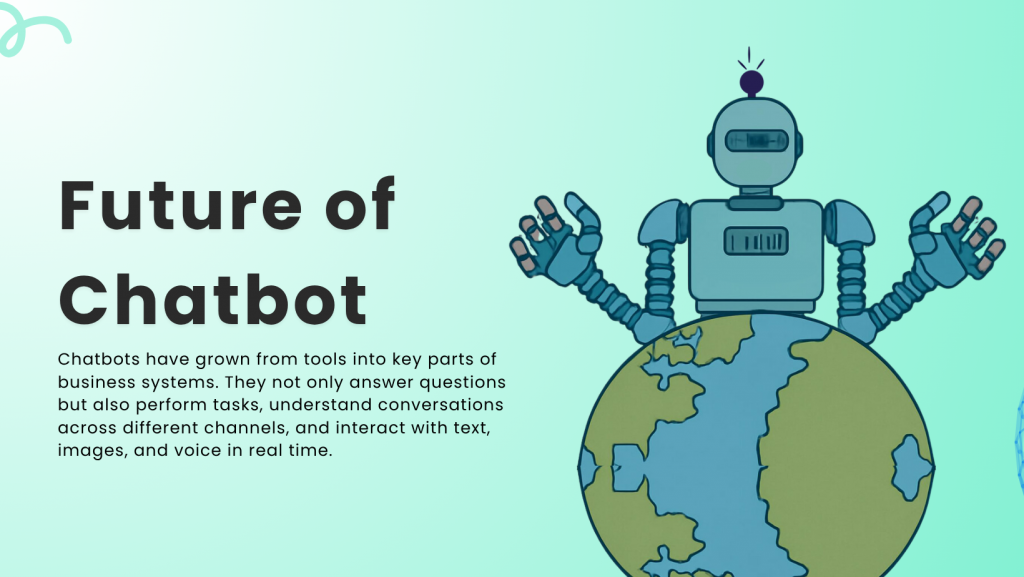
Chatbots in 2025 have matured from simple tools into core business systems. They do much more than answer questions. They handle actions, understand conversations across channels, and work with text, images, and voice in real time.
AI agents (agentic ai) are moving beyond scripted responses. Systems such as OpenAI Operator now complete bookings, submit forms, and browse the web on their own. Early tests with delivery and travel companies show that these agents can manage real transactions with growing accuracy. The change is not just about automation but about giving AI the ability to act inside daily operations.
Modern chatbots can read, listen, and see at the same time. In healthcare, they analyse medical reports while replying to spoken questions. In retail, they recognise a product from a photo and suggest alternatives instantly. Businesses prefer these systems because they understand multiple formats of information instead of just text.
Voice has become a practical way to communicate with AI, especially when speed is important. Improvements in accent recognition and response timing have made speech-based chatbots suitable for international use. Many service providers now use them to manage large call volumes with near-human response times. As delay drops under one second, voice is starting to replace typing for many users.
Large organisations no longer treat chatbots as side channels. They embed AI agents inside CRMs, billing software, and customer portals. This integration automates documentation, ticket updates, and data entry. Analysts expect that by 2026, nearly half of enterprise software will include built-in AI that performs such tasks with little or no human help.
Customer support is becoming more predictive. Chatbots now remind users of upcoming renewals, identify problems before they occur, and follow up after service interactions. Emotion recognition is also improving, helping systems adjust tone when a user sounds frustrated or upset. This shift from reactive replies to proactive care is changing how people experience digital service.
Governments are introducing new standards for AI transparency and data handling. Finance and healthcare sectors are under closer watch, with strict requirements to show when an AI system is interacting with a person. Companies are expected to maintain human oversight of automated decisions. The focus is moving toward responsible innovation and accountability.
Modern AI platforms now combine reasoning, search, and action in one place. A single session can research a topic, collect data, perform an operation, and present results. This unification turns AI from a single-purpose feature into a general assistant that works across functions.
What This Means for Businesses
The shift from passive chatbots to active agents has already started. Companies using these systems gain faster workflows, lower operating costs, and better customer engagement. Those who delay adoption will struggle to match the efficiency of AI-assisted operations. The real advantage lies in implementing agents thoughtfully, aligning them with business goals, and monitoring their performance closely.
Related Reading:
An AI chatbot is a software application designed to simulate human-like conversation. Unlike older rule-based bots, modern AI chatbots (like those built with YourGPT) use natural language processing to understand, respond to, and learn from user interactions in real-time.
The cost in 2025 depends on the path. No-code platforms like YourGPT are cost-effective, with plans from $30-$500/month for small businesses and $800-$10,000+/month for enterprise. Custom development is much more expensive, often costing $10,000-$150,000+ upfront.
An AI chatbot learns by “training” on your specific facts. With a platform like YourGPT, you simply upload your content (help articles, FAQs, PDFs, website links). The AI reads and indexes this information instantly to provide natural, accurate responses.
A chatbot answers questions (e.g., “What is your refund policy?”). An AI agent takes action (e.g., “I want to return my last order.”). Agents are the next evolution, able to understand a goal, make a plan, and use tools (like connecting to Shopify) to complete a task.
Using a no-code platform like YourGPT, you can deploy a basic, functional chatbot in under one hour. This includes signing up, uploading your knowledge base, and customizing its appearance. More advanced integrations may take a few days of refinement.
Yes. Modern AI platforms like YourGPT are designed to connect to your other tools (CRM, e-commerce, support desks) via integrations and APIs. This allows the chatbot to check order status, create support tickets, or retrieve customer history to solve real problems.
No. An AI chatbot augments your team, it doesn’t replace it. It handles high-volume, repetitive questions, freeing your human agents to focus on complex, sensitive issues where empathy and problem-solving are required. Platforms like YourGPT create this perfect partnership.
The best handoff is seamless and contextual, so the customer never repeats themselves. A good handoff, like with YourGPT, involves the AI instantly summarizing the chat history for the agent, who receives this context *before* joining the conversation.
The most important KPIs are: 1. Automation Rate (percentage of chats resolved without a human), 2. Escalation Rate (how often it transfers to a human), and 3. Customer Satisfaction (CSAT) scores from post-chat surveys.
Chatbots are now embedded in the everyday business operations. They answer questions, retrieve order details, confirm appointments, and guide users through simple steps. Their purpose is not to replace people but to provide quick, reliable access to information already available within a company’s systems.
Retail teams check stock before a purchase. In healthcare, staff guide patients to the correct form or time slot, while in logistics, they update delivery status without waiting for a ticket to be opened. These aren’t scripted replies but actions triggered by live data, tied to real workflows.
YourGPT brings all of this together in one no-code platform built for support, sales, and operations. It helps teams create AI agents that understand their data, reflect their brand, and deliver measurable results without technical complexity.
Create AI agents that manage support, sales, and daily operations — all from one platform built for real business results.
No setup cost • No coding required • Built for real business growth
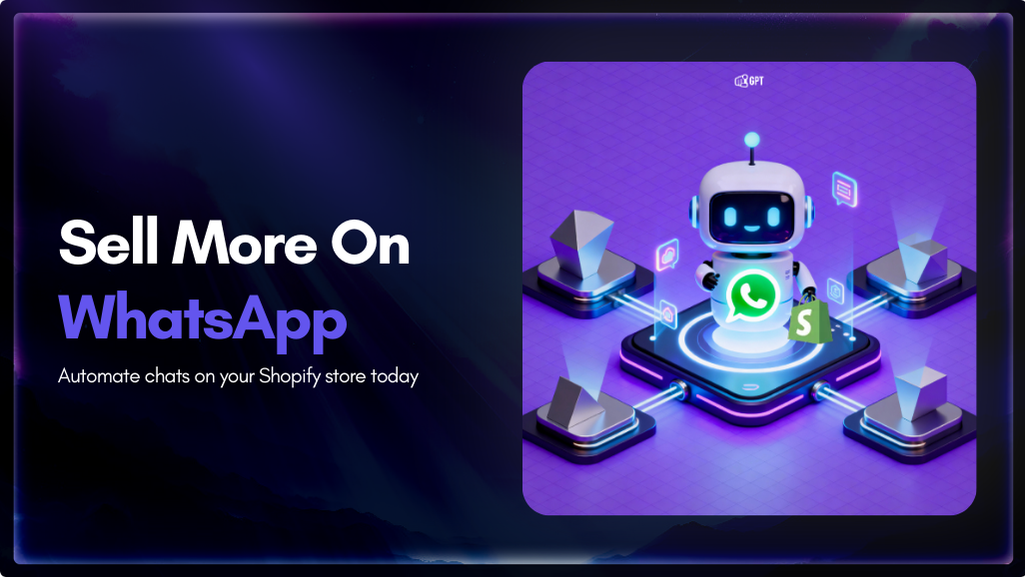
Shopify stores often use a chatbot on their website to handle product questions, order updates, and support. But customers also message on WhatsApp expecting the same quick answers. Most of them already use WhatsApp throughout the day, so reaching out there feels natural. A chatbot that works across both channels responds in seconds, guides purchase […]

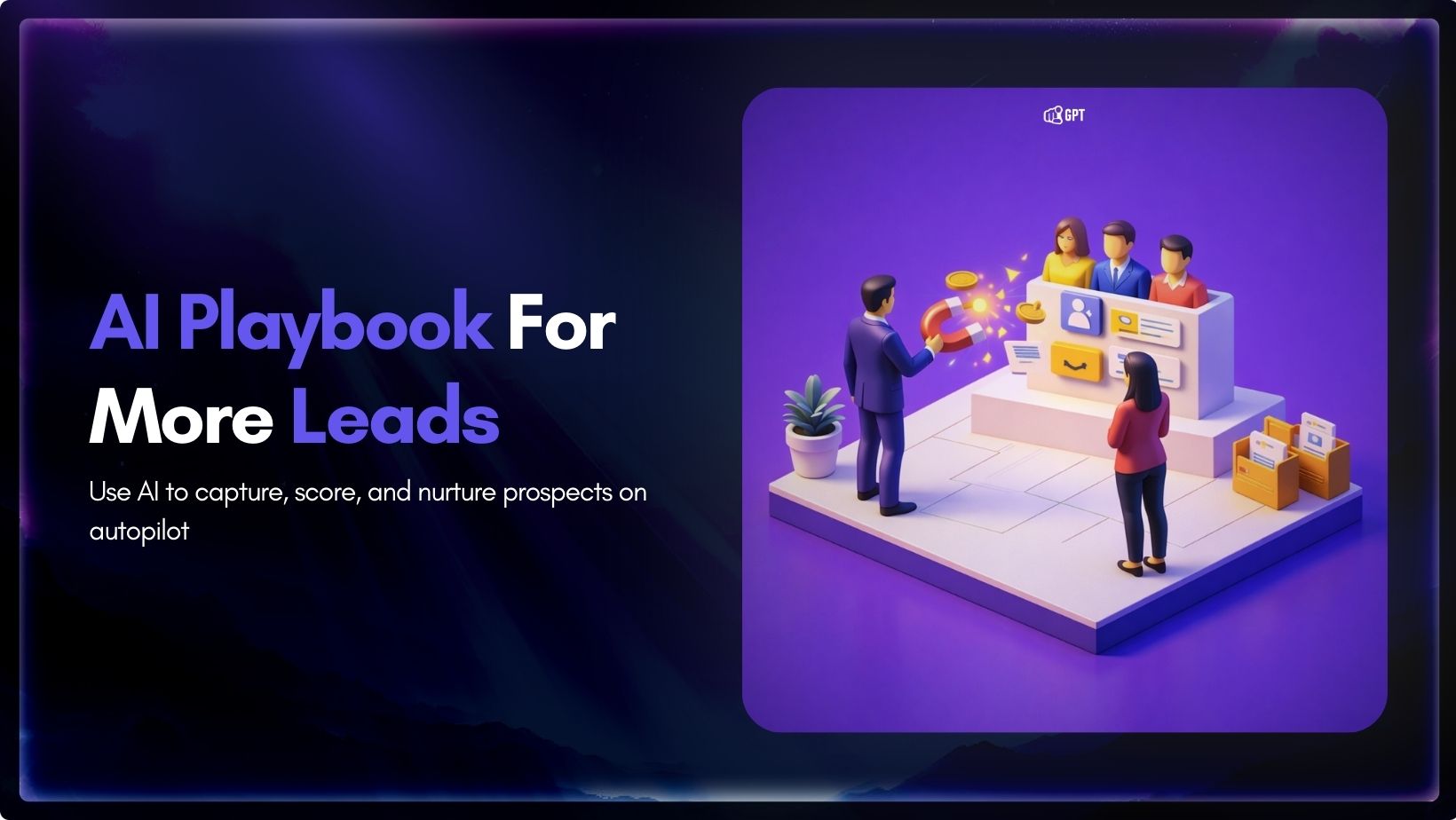
Most businesses do not struggle to generate leads. They struggle to know which ones are worth acting on. Forms get filled, DMs arrive, emails are opened, and chats happen across multiple tools. Some prospects convert. Most do not. The real problem is that there is no reliable way to tell, early enough, which signals actually […]


Artificial Intelligence has advanced quickly over the past five years, moving from an experiment to a standard component of modern business. AI has become a central part of enterprise strategy. 88% of organizations are now using AI. This figure has increased from 78% the year before. This transformation is reshaping how companies run, communicate, and […]

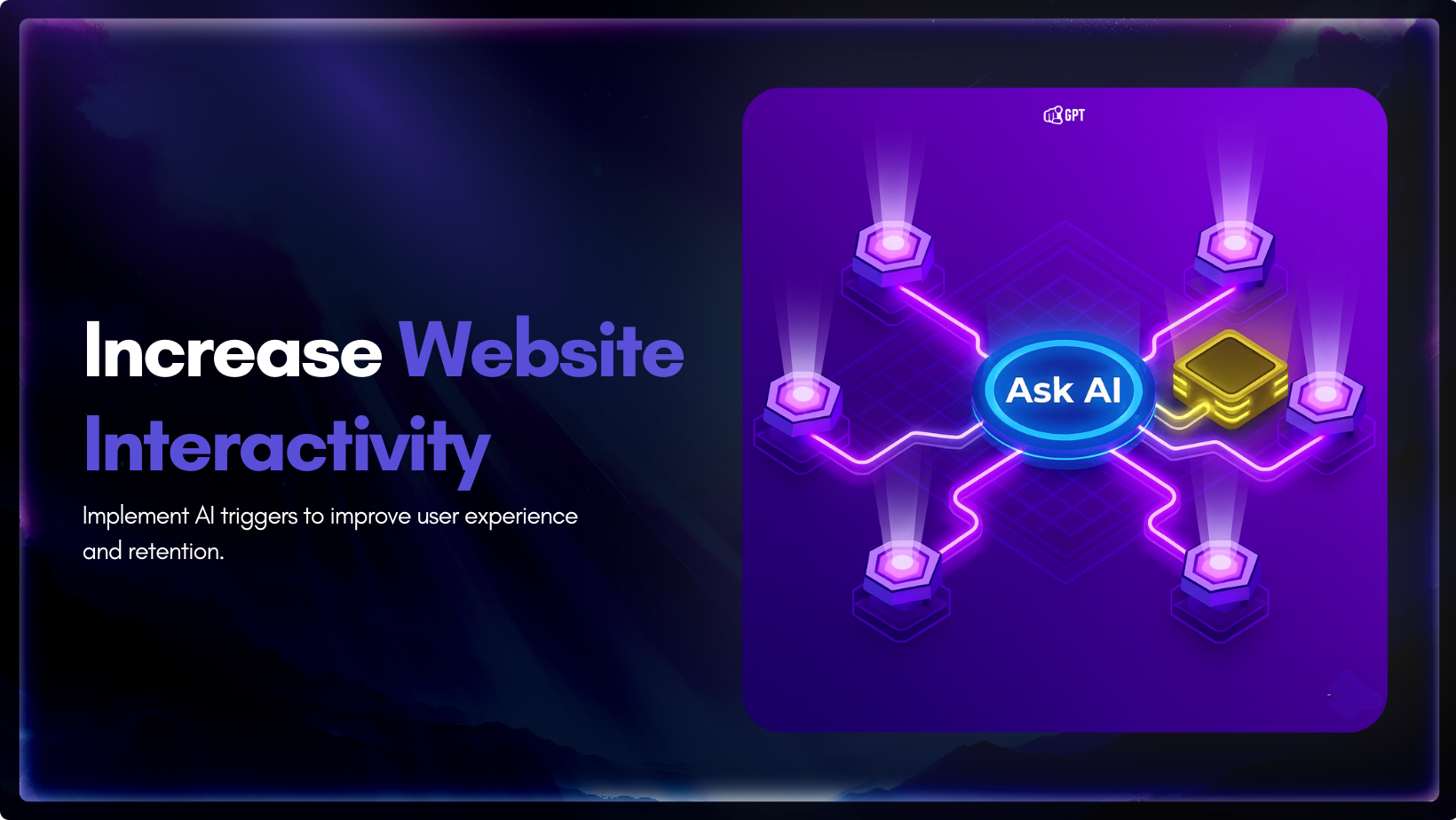
You invest time writing your website copy. You explain features, pricing, and how everything works. The information is there. Still, some visitors leave without clarity, and small gaps in understanding often stop them from moving forward. This happens because a static page cannot adjust to what they want at that moment. They skim a section, […]

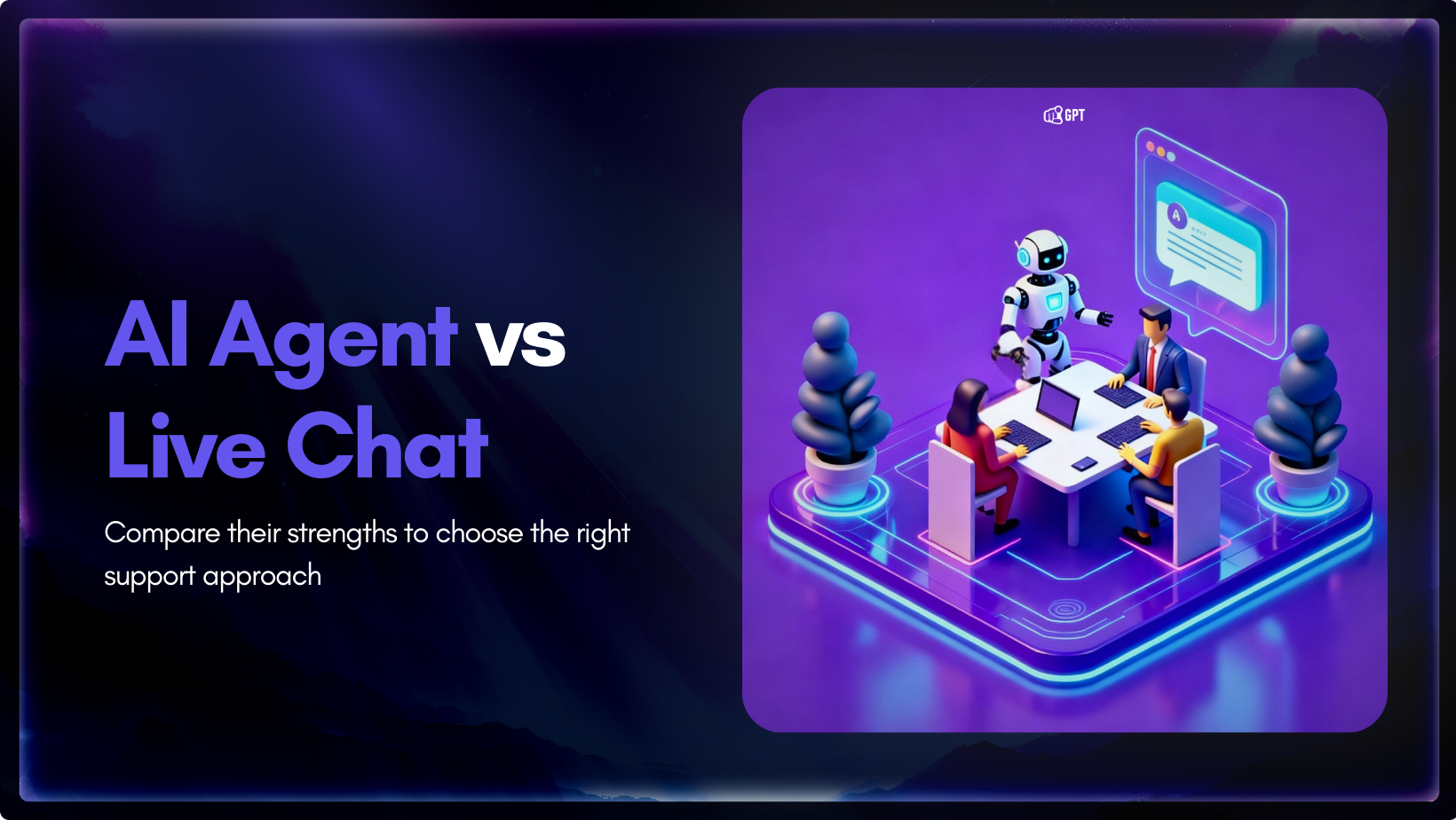
AI agent and live chat each play a different role in customer support, and the choice between them influences how a team handles growth. Companies are moving toward faster support models, and one clear trend is the use of AI to reduce operating costs by up to 30%. The difference shows up when ticket volume […]

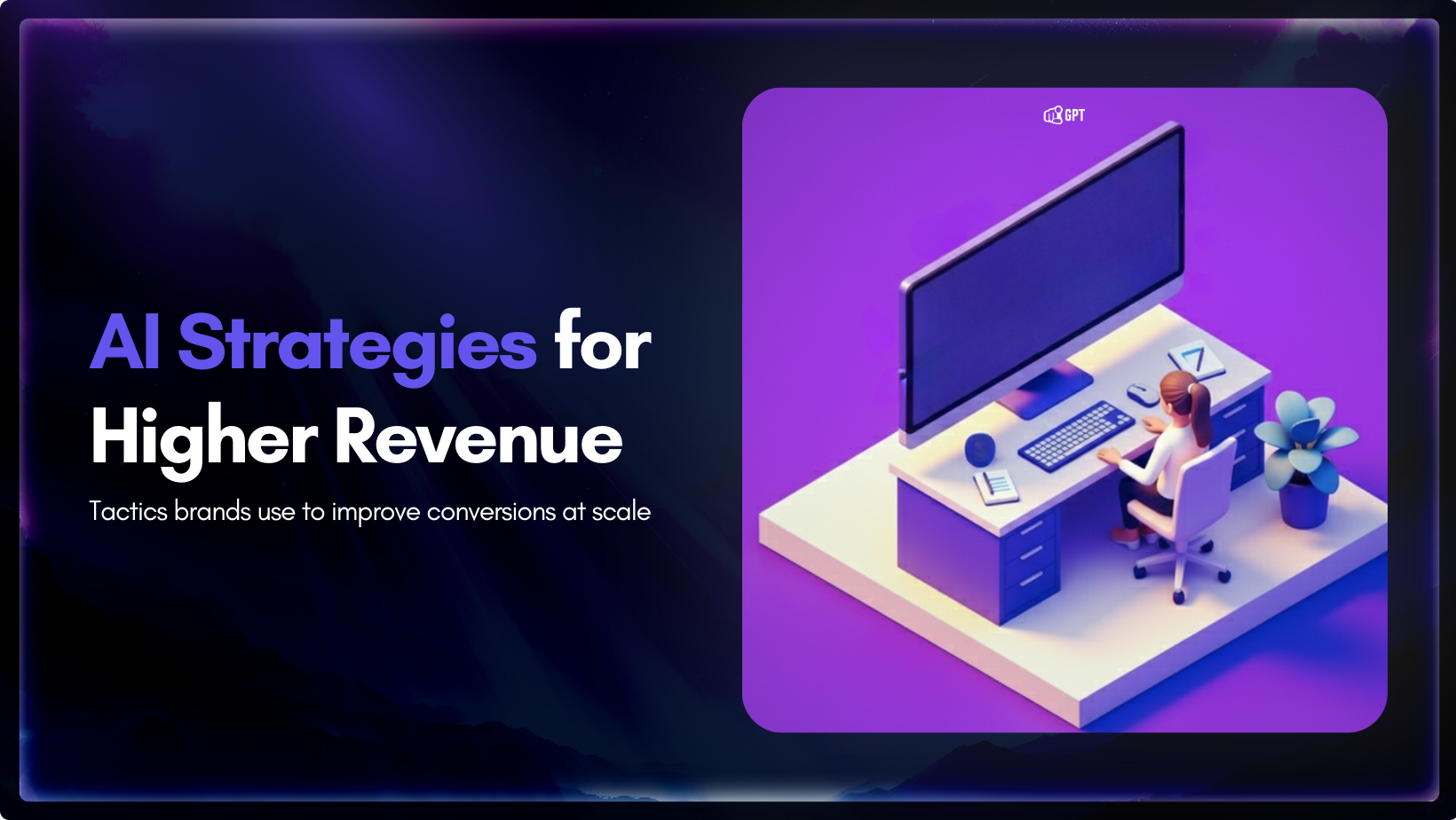
You have definitely heard about the use of AI in marketing. But have you ever seen or learned how it can actually drive revenue? Well, firms using AI in marketing and sales report significant benefits. According to a recent study by McKinsey & Company, revenue increases from AI show up most in marketing and sales, […]
